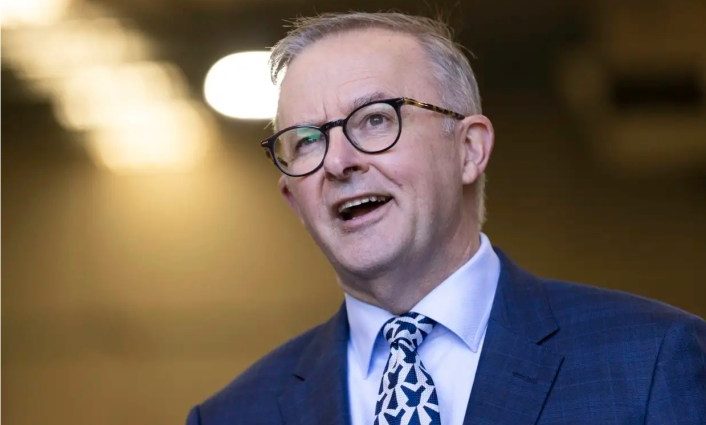After 12 months in office, a massive blowout in net migration and two major reviews, the Anthony Albanese government will, in 2023 and 2024, embark on a significant overhaul of immigration policies that will bring down Australia’s net migration from its current peak.
From July 1, 2023, the government has undone a range of Covid-19 policy settings. These were implemented by former prime minister Scott Morrison’s Liberal–National coalition government due to pressure from business lobby groups desperate for labor.
The most significant was former immigration minister Alex Hawke’s decision to provide international students with unlimited work rights. That decision drove a record surge in offshore student visa applications in 2022 and to date in 2023.
From July 1, 2023, international students’ work rights are restricted to 48 hours per fortnight from a previous 40 hours per fortnight. This will impact over 610,000 students currently in Australia.
The financial calculations these students will have made – with many of them having borrowed huge sums to pay tuition fees – are unlikely to have allowed for the re-imposition of restricted work rights, a sharply weaker labor market forecast by Treasury, high interest rates and the rapidly rising cost of living.
Both the Coalition and Albanese governments have made temporary graduate visas more attractive with longer stay provisions. This increased the number of temporary graduates in Australia from around 90,000 in mid-2021 to almost 195,000 by May 2023.
The surge is despite large numbers of temporary graduates obtaining permanent residence through the nomination of state or territory governments, a skilled independent visa or an employer-sponsored skilled temporary visa.

If the labor market weakens as forecast, temporary graduates may find it increasingly difficult to secure a long-term skilled job that enables them to be nominated by a state or territory government, to qualify for a skilled independent visa or to be sponsored by an employer for a skilled temporary visa.
The minimum salary for this visa will also rise to AU$70,000 (US$47,734) from July 1, 2023 after being held down by the Coalition for a decade.
The Coalition government also established a special fee-free Covid-19 visa stream with full work rights (subclass 408) that was predominantly taken up by overseas students and temporary graduates whose visas were expiring but could not leave Australia due to travel restrictions.
There are almost 100,000 people currently in Australia on this visa. This visa will likely be closed to new applications in the near future.
The Coalition government made major changes to the Working Holiday Maker (WHM) and the Work and Holiday (W&H) visas including increasing caps on the number of W&H visa holders by 30% in 2022–23. It also allowed these visa holders to work with one employer for longer than six months, enabled them to apply for a third visa and increased age limits.
These changes rapidly increased WHM and W&H visa holders in Australia from around 19,000 in early 2022 to almost 140,000 by May 2023. From July 1, 2023, WHM and W&H visa holders will need to change employers every six months.
Two other changes will be the introduction of the Pacific Engagement Visa (PEV) and direct access to Australian citizenship by New Zealand citizens who have been in Australia for a significant period. The PEV is a permanent visa.
Despite the requirement of a formal job offer, the 2023–24 Federal Budget has assumed a large portion of the PEV holders will fall back on social security. That poor policy outcome should lead the government to re-design this visa.
Despite its border protection and visa integrity rhetoric, the Coalition government presided over the largest decline in immigration compliance activity over the last 40 years. That contributed to the visa system becoming widely abused and increased migrant worker exploitation.
In response to a Nine Network investigation, the Albanese government commissioned a former Victorian state police commissioner Christine Nixon to undertake a review of visa integrity. While the government has not yet released the Nixon report, the Melbourne-based newspaper The Age appears to have sourced a copy and says the findings are “scathing.”
The recent federal budget allocates funding to increase immigration compliance activity. But much of that will be needed just to enforce visa changes that start from July 1, 2023.
An editorial in The Age demanding action will put pressure on the government to go further, especially in terms of the abuse of the asylum system. More than 100,000 asylum seekers currently in Australia will be especially vulnerable to labor market exploitation if the labor market weakens as forecast.

The Albanese government has announced measures to reduce migrant worker exploitation. But given the size of the problem, this will be a long way short of what is required. While tightening immigration policy, the Albanese government appears committed to attracting key skills in the health, aged care, education and information technology sectors.
One of the most significant announcements is an aged care labor agreement to address the chronic shortage of aged care workers, especially given Australia’s aging population. This will result in a shift in the focus of courses offered by international education providers towards these sectors.
The government should commit to a long-term target for net migration such as over a 10-year cycle, given net migration will increasingly be the main driver of population change.
Abul Rizvi holds a PhD in Immigration Policy from the University of Melbourne. He was a senior official in the Department of Immigration from the early 1990s to 2007.
This article was originally published by East Asia Forum and is republished under a Creative Commons license.

